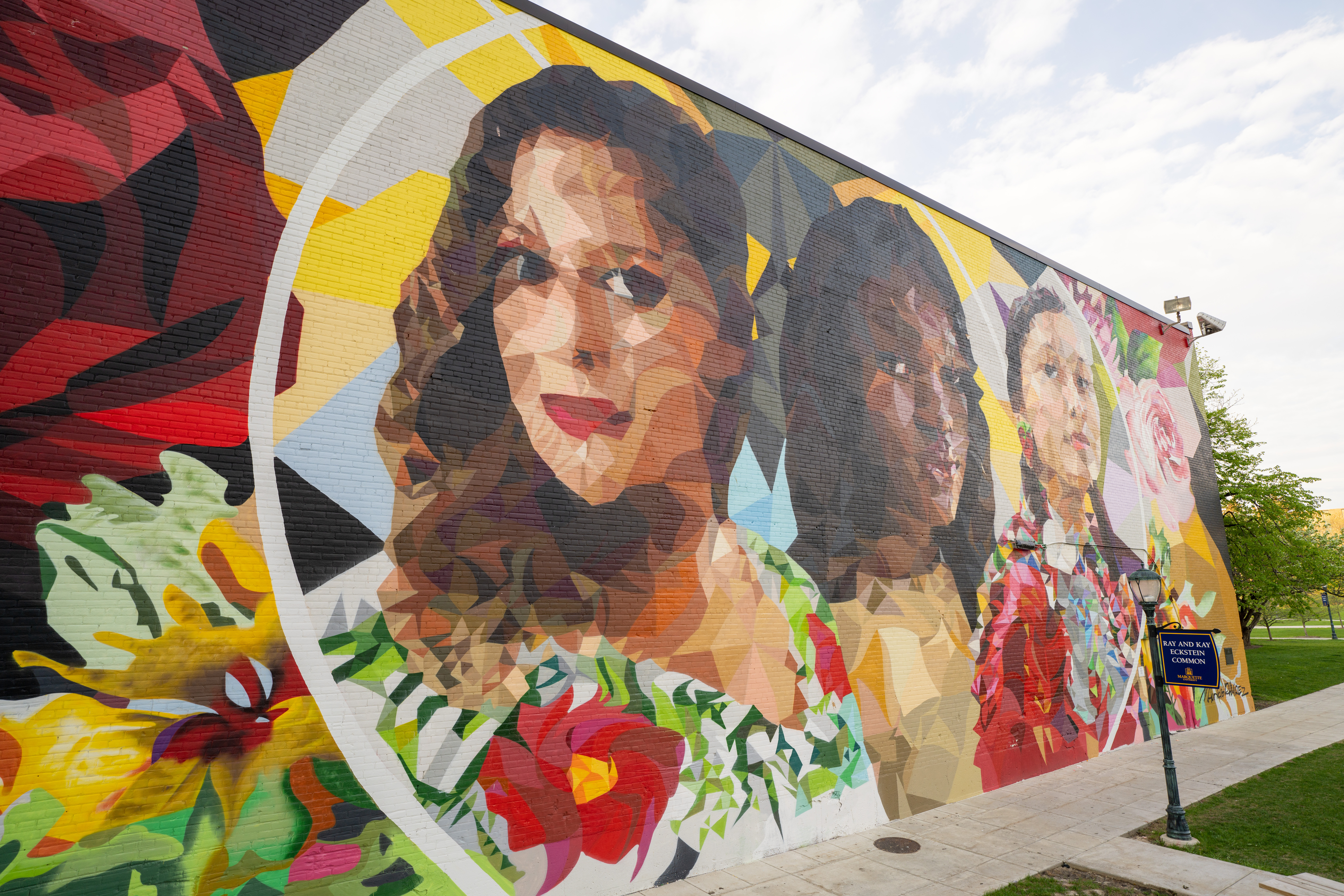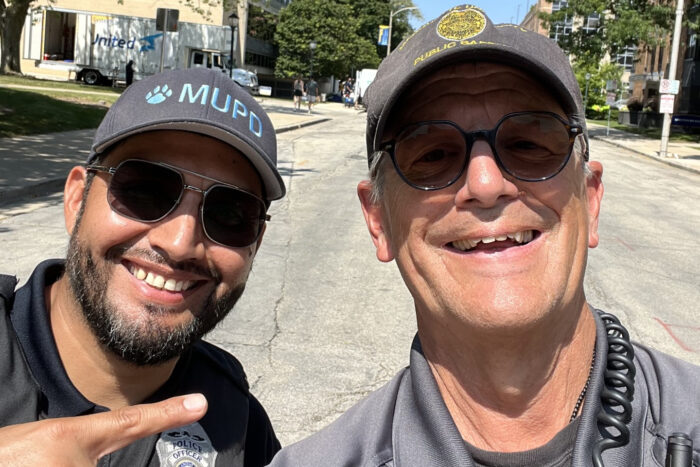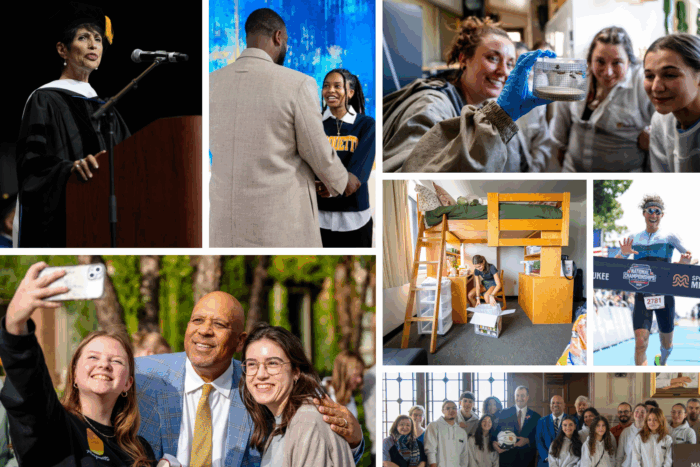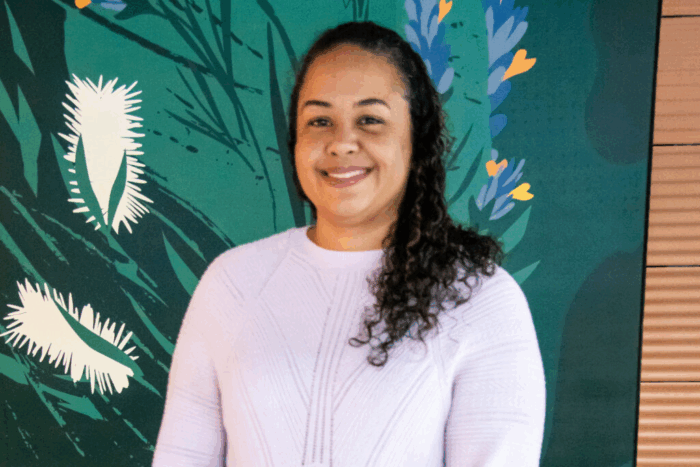Students, faculty and staff are exposed to fine art every time they walk around campus – yet most are unfamiliar with how expansive Marquette’s art collection is. Over 7,000 art objects are in storage at the Haggerty Museum of Art; some are displayed in various locations on campus. The highly visible mural Our Roots Say That We’re Sisters is on the north side of campus, but on the south side, near the museum, there are a number of other works of art to discover.
“At the Haggerty, we connect people to art, to ideas and to one another. Our exhibitions and programs in the galleries are the primary conduit, other times connections are forged through custom-made classes led by Lynne Shumow, Curator for Academic Engagement,” says Emilia Layden, acting director of the Haggerty Museum. “For some, art that people encounter on campus is the entry point.”
She adds that art in a public space transforms people’s experience: “Placing art on view outside of our galleries makes it broadly accessible. It issues an invitation to the campus community to get to know more about what we do inside the museum.”
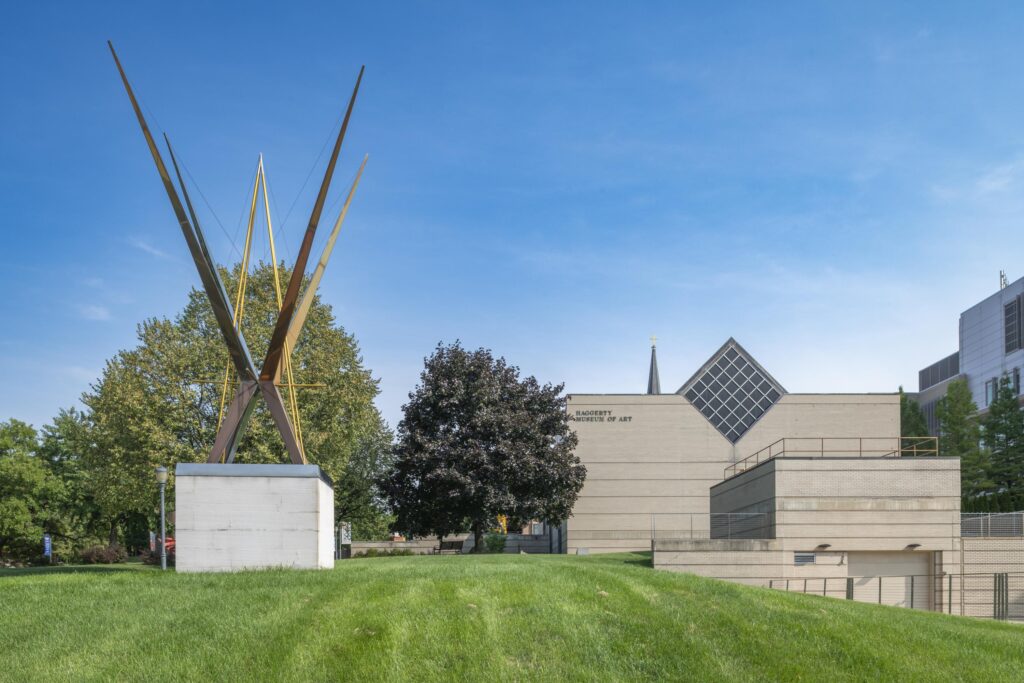
Marquette’s unique sculptures
The Ex Stasis is a steel sculpture that was once the centerpiece of the west courtyard of the AMU.
It debuted in the late 1980s at the Venice Biennale, a major international art exhibition. A few years later, it was donated to the Haggerty for the artist’s retrospective at the museum. Now, it can be seen outside the museum.
The sculpture is made of stainless steel and cable. It was created by former industrial designer, Richard Lippold. The artist described the work as a “symbolic celebration of the human spirit.” Lippold made numerous sculptures between the 1950s and 1980s, including the 80-foot-long sculpture that hangs in the 18-story lobby of Milwaukee’s Hyatt Regency.
Last year, another Lippold work was donated to Marquette. Al Cielo, which translates as “to heaven,” hangs in the lobby of Dr. E. J. and Margaret O’Brien Hall.
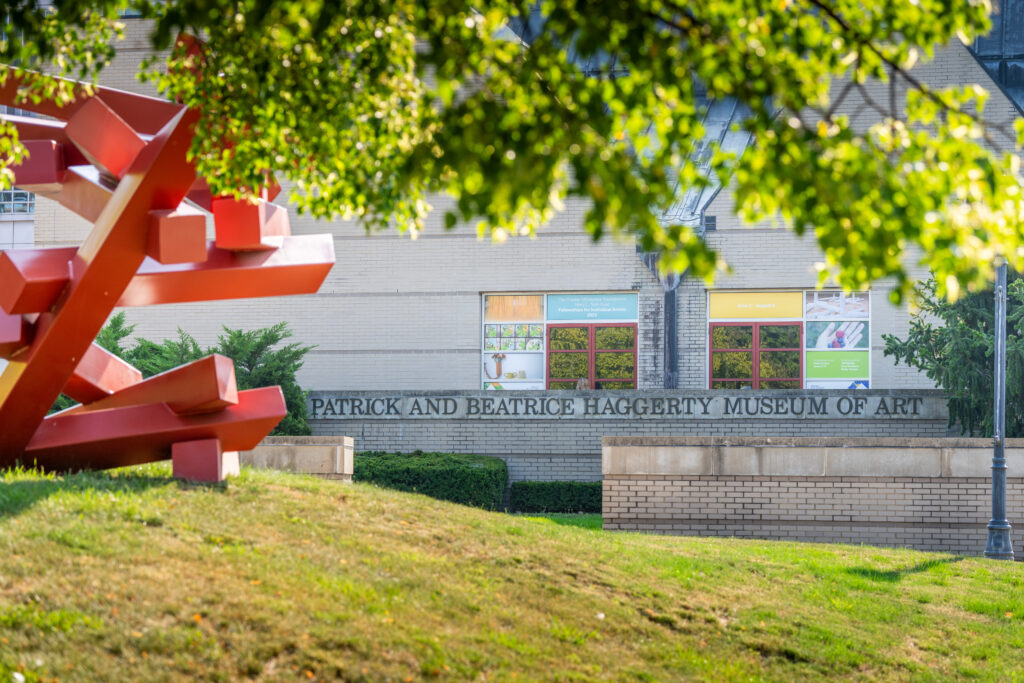
Ruins X is another monumental sculpture on campus. The array of red beams give off an illusion of being frozen in motion. According to artist Ernest Shaw, the Ruins series uses steel “to draw in space.”
There are 30 sculptures in the Ruins series located all around the U.S., three of which are on UC Santa Barbara’s campus. Two smaller sculptures of Shaw’s are at Marquette, and several more of his sculptures are located 20 minutes north of Marquette at the Lynden Sculpture Garden.
Sometimes, Marquette temporarily hosts outdoor sculptures as part of the Haggerty’s collaboration with Sculpture Milwaukee, an annual exhibition of large scale works of art. From summer 2021 to fall 2022, the Haggerty hosted three sculptures by artist Kevin Beasley. Layden is currently in conversation with the curators at Sculpture Milwaukee to bring a new installation to campus in 2024.
Marquette art pieces rich with history
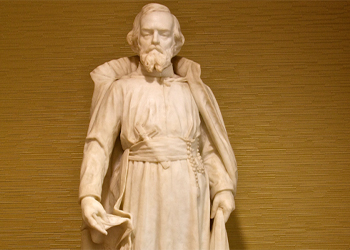
The Jacques Marquette Statue is located on the fourth floor of Zilber Hall. It is a replica of a statue that caused controversy in its era.
In the early 1800s, anti-Catholic agitators were worried that the Pope was thinking of coming to America to interfere with the democratic principles of the country. Wisconsin donated the statue to Washington, D.C., in 1896 with the intention of it being a monument. Congress refused to accept Wisconsin’s gift because it depicted a priest in popish garb with a crucifix in his belt. In 1904, the newly formed Marquette Alumni Association championed Congress to officially approve the statue of Father Marquette for the National Statuary Hall Collection.

The 20-foot-long mural located outside the Alumni Memorial Union’s Monaghan Ballrooms was created by 500 students from a diverse selection of area schools and is modeled after the Native American Circle of Life. Portions of the mural were created at different schools and then pieced together to reflect the spiritual energy of all races.
Understanding campus art
Will Eikenbary, a junior in their second year as Marquette University’s art club president, revealed that an art piece on campus was what inspired Eikenbary to join art club. Lovers by Adrian Kellard was on loan to the Haggerty as part of the exhibition “Double Vision: Art from Jesuit University Collections.” It is a wood cut, multimedia art piece depicting a crucifix blended with a 1990s New York City skyline.
“It’s an incredibly bold, vibrant piece,” Eikenbary says. “But it’s also one that carries so much emotion that it instantly grabbed my attention when I entered the room.”
Art exists in many forms, as explained by Eikenbary’s favorite Marquette art piece: “the culinary genius that is the McSchroeder Burger,” a special burger offered in the dining hall of Schroeder Hall. They offered advice for individuals who have a difficult time understanding or connecting with a piece of art.
“Try looking harder and deeper,” Eikenbary says. “There are always layers beyond the first object you see in a painting.”
